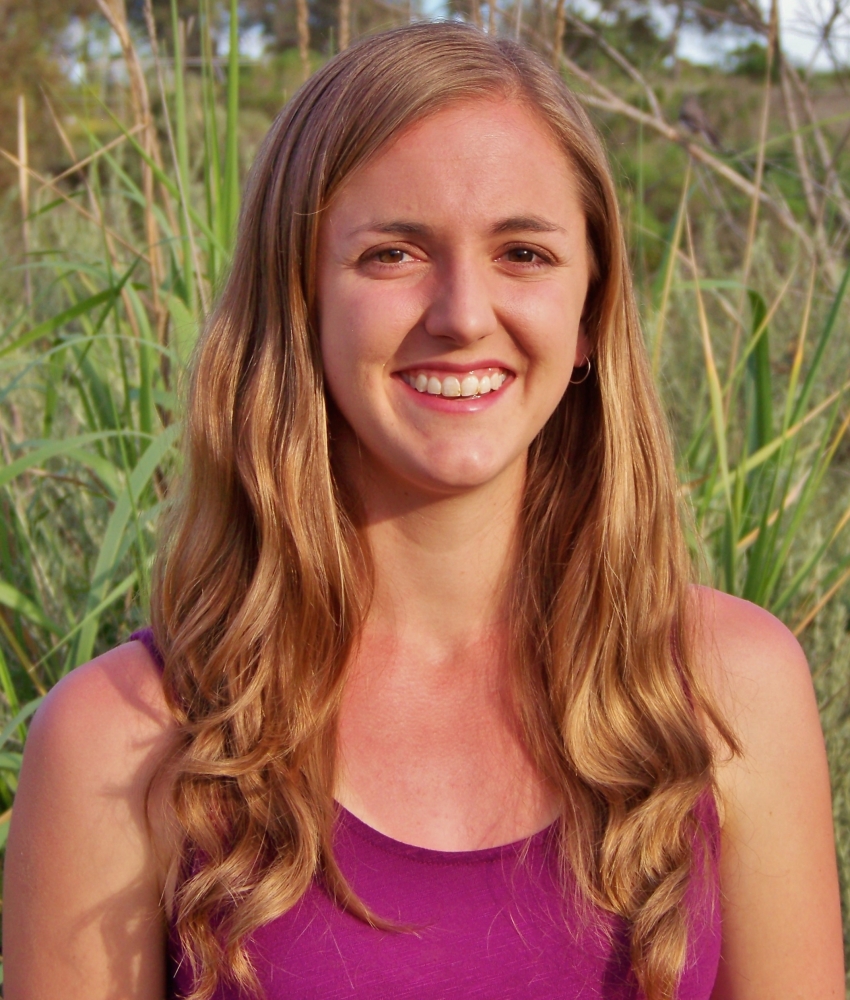
Silver Bells
For UC Santa Barbara graduate student Stacy Copp, silver can be more valuable than gold — at least when it comes to DNA-stabilized clusters containing 10 to 30 atoms of the precious metal. Copp is conducting her Ph.D research on these few-atom assemblies and the mechanisms that select their fluorescence colors.
In her work as part of the Beth Gwinn Group in the Department of Physics, Copp has received a silver research excellence award from the Materials Research Society (MRS). She also won the MRS’ Arthur Nowick Award, which recognizes a graduate student who shows particular promise in materials science teaching and mentorship.
“The teaching and mentorship award means a lot to me,” said Copp, who will graduate in 2016. “I think the most fun part of research is guiding younger people in the experience and sharing my excitement with them.”
The overarching theme of Copp’s research is to understand how DNA controls the size and shape of silver clusters and how to use DNA as a tool to position them on the nanoscale. The group’s efforts to learn more about DNA’s stabilizing role were furthered by creative ideas about machine learning put forward by undergraduate Mark Debord. Computer science professor Ambuj Singh and his former postdoc Petko Bogdanov, now a professor at the State University of New York at Albany, collaborated on this work.
“In some ways, these two awards in my mind are connected because it was Mark’s really great idea that sparked a collaboration, leading us to come up with unconventional approaches to the problems we study,” Copp said. “I am proud that this work was driven in part by undergraduates I have mentored, who had some very exciting ideas and contributed in important ways. Their contributions helped us to understand the role of DNA sequence in selecting silver clusters, a key step toward using these clusters in applications.”
Copp and her colleagues were able to position silver clusters at programmed sites on a nanoscale “breadboard,” a construction base for prototyping of photonics and electronics. Their breadboard was a DNA nanotube with spaces programmed 7 nanometers apart.
“Our lab has made a large contribution to understanding these silver clusters and their promising potential as fluorophores for biomedical applications and nanophotonic elements,” Copp said. “It’s really important to understand what they are and how we can control them.”
Fluorophores are fluorescent chemical compounds that emit light upon excitation. These compounds are found in wide-ranging applications, from solar energy to biomedical research and diagnosis.
Gwinn’s team has been able to tune silver nanoclusters to fluoresce in a wide range of colors, from blue-green all the way to the infrared — an important achievement because biological tissues have windows of high transparency in the infrared. According to Copp, biologists are always looking for better fluorescent molecules or other infrared-emitting objects to use for imaging through a tissue.
“Stacy is a fearless and creative researcher and extremely effective in bringing out the best in the people she works with,” said Gwinn, a professor in the Department of Physics. “There were hundreds of nominations for these awards and she was selected to get two of them. That’s pretty impressive.”



